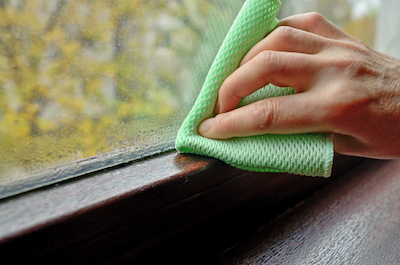Does Air Conditioning Reduce Humidity?
We all know that horrible sticky feeling of excess humidity so you might wonder how does air conditioning reduce humidity. We also notice that it goes away in any air-conditioned space. Maybe you have heard that air conditioning can help reduce high humidity levels in your house. But is that what’s actually happening, and if it is how does it working?
Many people believe that air conditioning works by blowing cold air from the outside into the interior. But this isn’t true. The air from outside is not actually brought into the house in either heating or air conditioning of a space. Both air conditioning and heating systems work by moving the heat from one location to another. In the case of cooling, you’re taking heat from the inside and moving it to the outside.
How Does HVAC Cool Your Air?
To understand how air conditioning reduce humidity levels in your home, you first have to understand how air conditioning works. Delivering cold air into your home requires two different components working together: air and a refrigerant line. The refrigerant line is responsible for absorbing heat from the inside air and releasing it outside. Air from inside is blown over the refrigerant line where heat is absorbed by the refrigerant. The exterior air is blown over the refrigerant line to draw heat out of the refrigerant.
This is a complicated system so here are a few basic steps in that process.
- Interior air blows over the refrigerant line
- Heat is pulled from the air into the refrigerant
- Refrigerant line runs to the exterior
- Air blows over the refrigerant line
- Heat is released into the air
Of course, this process is much more complex, but this should give you a general understanding of how HVAC units move heat from one place to another.
How Does Air Conditioning Reduce Humidity?
Now that we understand the basics on how air conditioning works, we still don’t know how it actually removes humidity. Since air isn’t actually transferred from the inside to the outside how does water get pulled out of the house?

Set Your Thermostat to Auto
If you want to use your HVAC to reduce the humidity in your home, you need to have the thermostat set correctly. To do this set your system to auto, not on. The difference between these two setting is that the on setting will blow air continuously, even when it is not cooling. Auto will automatically stop blowing air when it isn’t being cooled.
When set to on, air that is blown over condensation on the refrigerant lines is not being cooled. This means that it is able to evaporate some of that condensation. This will then recirculate humidity into your home. By setting your system to auto the air stops circulating and the condensation can drain properly.
How Air Conditioning Reduces Humidity Without Cooling
You may want your air conditioning to reduce humidity levels in your house without cooling it. This can be done by setting your thermostat to auto and 2-3 degrees colder than the current temperature. This will cool your house slightly but will mostly work to reduce the humidity levels inside. This can be a great way to save on energy while keeping your home comfortable.





